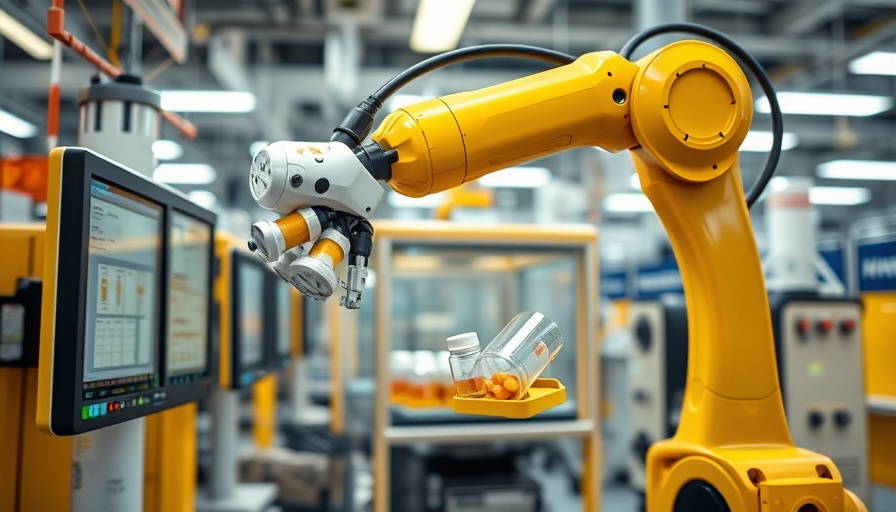
Walgreens Takes a Leap into Automation: What It Means for Patients
As pharmacies around the nation grapple with shifting consumer behaviors and healthcare demands, Walgreens is stepping up its game. The company is expanding its micro-fulfillment centers, which utilize automation to fill prescriptions, a move intended to enhance efficiency and customer service.
The rationale behind this investment is clear: by integrating robotic technology into its operations, Walgreens aims to free pharmacy staff from repetitive tasks. This shift not only helps reduce errors and streamline processes but also allows pharmacists to spend more time interacting with patients and engaging in direct clinical services.
Why Automation is Key in Today's Pharmaceutical Landscape
The pivot towards greater automation reflects broader trends within the pharmaceutical and retail sectors. In an environment where customer expectations are continuously rising, providing efficient service is no longer just advantageous; it's essential. Walgreens reports that its robot-run centers already account for 40% of the prescription volume at participating stores. This statistic underscores the vital role automation plays in meeting the increasing demand for prescription drugs, especially for those managing chronic conditions such as diabetes and hypertension.
The Implications for Pharmacy Staff and Patient Care
The expected expansion of these robotic systems means that pharmacy staff will be able to allocate their time more effectively. Fewer hours spent on routine tasks equates to more hands-on patient interactions. Pharmacists can engage in consultations, help with medication management, and administer preventative services like vaccinations directly. As health systems increasingly recognize the importance of personalized care, Walgreens' strategy positions it to meet these evolving needs head-on.
Looking Ahead: The Future of Pharmacy Automation
The automation trend at Walgreens is part of a larger narrative in the retail and pharmacy space, as many chains are exploring technology to enhance operational efficiency. Other retailers, such as CVS and Rite Aid, are also investing in similar automation technologies. This creates a competitive landscape where those who can adopt technological solutions effectively may thrive, while others risk falling behind.
Addressing Concerns: Balancing Automation with Human Interaction
However, as automation becomes more prevalent in pharmacies, various stakeholders are raising concerns. The balance between technological solutions and genuine, human pharmaceutical care must remain a priority. Critics argue that as robots take over routine tasks, there is a risk of diminishing the personal touch that is often crucial in healthcare scenarios. It is imperative for Walgreens and other companies to ensure that customer service retains its human element amidst rising technologies.
Community Impact and the Value of Improved Pharmacy Services
For communities dependent on local pharmacies for essential healthcare services, the enhancements made possible by automation could lead to improved health outcomes. By liberating pharmacists from mundane tasks, communities might benefit from increased health services, faster response times, and enhanced overall patient experiences. Such improvements could pave the way for pharmacies to emerge as pivotal health hubs within their communities, particularly as healthcare continues to become more multifaceted.
Conclusion: Embracing the Future of Pharmacy
Walgreens' renewed focus on automating prescription filling marks a significant turn in the complex interplay of technology and healthcare. As the pharmacy gears up for major changes, consumers and industry stakeholders alike will be keenly watching to see how these innovations transform the pharmacy landscape. In the drive towards efficiency and enhanced patient care, Walgreens is setting a benchmark for how automation can serve as a powerful ally in modern healthcare.
 Add Row
Add Row  Add
Add 




 Add Row
Add Row  Add
Add 

Write A Comment